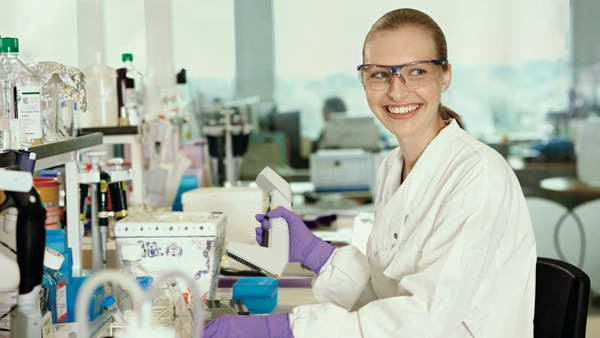
Dr. Koestler, assistant professor within the University Of Kansas School Of Medicine’s Biostatistics Department, is creating statistical prediction models that could help doctors determine when non-invasive bladder cancer will return. The model is based on a series of clinical and pathological markers as well as biomarkers.
“I’m hoping it will be something that allows clinicians to do their jobs more successfully,” explained Dr. Koestler. “There are a lot of different factors that go into predicting recurrence, and human beings might not be the best at making use of that information all at once, whereas a prediction model can do it easily.”
The model he’s creating, called a nomogram, are already in use to predict cancer recurrence; however, the current process uses only clinical data such as age, family history, tumor size and location, cancer stage and more, Dr. Koestler is taking it up a notch by also using a DNA methylation-based biomarkers in the construction of his nomogram.
The nomogram is a prediction model that combines complex statistics to arrive at a simple conclusion: Is this person’s bladder tumor likely to return, and if so? Dr. Koestler chose bladder cancer for the development of his nomogram because it has such a high rate of recurrence. Bladder cancer is the sixth most common cancer (an estimated 74,600 new cases this year alone), yet the long-term survival rate is about 70 percent if the cancer is found before it spreads outside the bladder. Even so, about 80 percent of patients see a recurrence within three years of their initial diagnosis and tumor removal, according to the National Cancer Institute.
“These patients need to be frequently monitored by their physicians and over a long period of time,” explained Dr. Koestler. “That is not only a physical and societal burden, but also a huge economic cost. Bladder cancer ranks number one in terms of per patient treatment cost and it’s because people live a long time and need to be frequently monitored throughout that time.”
If the nomogram can accurately predict recurrence, low-risk patients wouldn’t need to come into the doctor’s office as often, and high-risk patients could be identified early on for potential clinical trials and receive priority testing. Dr. Koestler is hoping to add more clinical value to his nomogram by adding DNA methylation biomarkers into the equation. As of now, he doesn’t know of any bladder cancer prediction model using such information.
DNA methylation is one of several epigenetic mechanisms that can affect the expression of a gene, should it occur in a key region. If DNA methylation is occurring in a tumor suppressor gene, which prevents us from developing tumors, then the methylation could silence the gene and potentially set the stage for cancer development.
Though the technology Dr. Koestler and his team are using consists of measurements of DNA methylation at over 27,000 locations in the genome, he and his team narrowed it down to just 11 that are included in their nomogram. Those 11 DNA methylation biomarkers are strong predictive of risk of recurrence, independent of the standard clinical and pathological risk factors.
To determine if adding in the DNA methylation biomarkers made the nomogram a better predictor than just the basic patient and tumor information, Dr. Koestler used what is called a concordance index, which measures how well the prediction model actually works. The index measurements are from a 0.5 to 1, with 0.5 meaning the prediction model is no better than a coin toss.
A previous nomogram for bladder cancer that used only clinical and pathological data, no biomarkers, scored a 0.67. Dr. Koestler also made a nomogram using his data, without the DNA methylation biomarkers, and it scored a 0.65. This was encouraging as both nomograms used the same type of predictors and achieved similar results, he said.
When Dr. Koestler added in the biomarkers, the concordance index jumped up to 0.75; a statistically significant and potentially, clinically important jump.
“These biomarkers do seem to have value for predicting bladder cancer recurrence above and beyond the traditional clinical and pathological predictors,” said Dr. Koestler. “That was really exciting to us, especially because we only used a small number of the biomarkers available to us.”
So far, the preliminary results have been promising, but there are still other biomarkers to be tested within the nomogram to potentially increase its accuracy. In the future, Dr. Koestler is hoping this prediction tool can be something clinicians can easily access and use. He would like to develop a mobile app that would let nurses and doctors use the prediction tool right in the room with their patients. All the information about the patient, such as the location of tumor, where it has spread to, whether or not the patient has pain and other predictors, could be entered immediately. Biomarkers and other lab data could be entered later.
“My ultimate goal is to allow clinicians to make real-time predictions and be able to distill all this data into a simple tool,” said Dr. Koestler.
This winter, Dr. Koestler and his team will apply for another grant to extend their bladder cancer nomogram to include more participants. Testing the nomogram using other populations is vital to validating how well the prediction model works and proving it could be used in a broad clinical setting.
“There’s a perception that biostaticians are all about math and writing code, so it feels good to have this model that could end up contributing to better clinical practice and improved decision making by doctors,” said Dr. Koestler. “It’s a tool that will support a doctor’s judgment or give an alternate point of view.” The study done by University of Kansas Cancer Center.